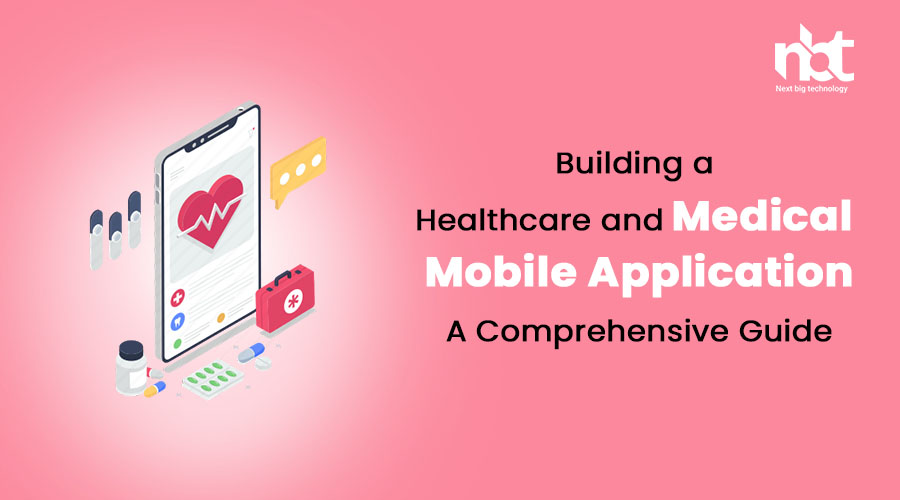Introduction:
In the digital age, healthcare and medical mobile applications have revolutionized the way people access healthcare services, manage their health records, and stay connected with medical professionals. These apps provide convenient and efficient solutions for patients, doctors, and healthcare providers. If you’re considering building a healthcare and medical mobile application, this comprehensive guide will walk you through the step-by-step process. From defining your app’s objectives to designing an intuitive user interface, integrating essential features, and ensuring a seamless healthcare experience, we’ll cover everything you need to know to create a successful healthcare and medical mobile application. Let’s get started!
- Define Your App’s Objectives and Target Audience:
- Identify the purpose of your healthcare app (appointment scheduling, telemedicine, health tracking, etc.)
- Determine your target audience (patients, doctors, healthcare providers, etc.)
- Analyze the competition and identify unique features or services for your app
- Choose the Right Platform and Technology:
- Select the mobile app platform (iOS, Android, or both)
- Determine the programming languages and frameworks (Swift, Kotlin, React Native, Flutter, etc.)
- Consider the backend infrastructure and data security requirements
- Design an Intuitive User Interface:
- Create wireframes and prototypes to visualize the app’s layout and user flow
- Design a visually appealing and user-friendly interface
- Focus on simplicity, clear navigation, and intuitive controls
- Implement User Registration and Authentication:
- Enable users to create accounts and log in securely
- Implement password encryption and two-factor authentication (2FA)
- Comply with healthcare data privacy and security regulations (HIPAA, GDPR, etc.)
- Integrate Electronic Health Records (EHR) and Health Information Exchange:
- Allow patients to access and manage their health records
- Integrate with healthcare providers’ systems for seamless data exchange
- Ensure strict data security and privacy measures for protected health information (PHI)
- Provide Appointment Scheduling and Telemedicine Services:
- Enable patients to schedule appointments with healthcare professionals
- Implement video consultations and secure messaging for telemedicine services
- Send appointment reminders and notifications to patients and doctors
- Enable Medication Management and Reminders:
- Provide features to track medication schedules and dosages
- Send medication reminders and refill notifications
- Integrate with pharmacies for easy prescription refills
- Incorporate Health Tracking and Wearable Device Integration:
- Allow users to track their health metrics (steps, heart rate, sleep, etc.)
- Integrate with wearable devices for seamless data synchronization
- Provide personalized insights and recommendations based on tracked data
- Implement Health Education and Resources:
- Offer a library of medical information, articles, and resources
- Provide access to reliable health databases and research materials
- Offer features for users to bookmark, save, and share health-related content
- Ensure Secure Messaging and Communication:
- Implement secure messaging features between patients and healthcare providers
- Comply with privacy regulations for sensitive health information exchange
- Enable patients to upload images or documents for remote consultation
- Enable Virtual Health Monitoring and Remote Patient Monitoring:
- Integrate with connected devices for remote health monitoring
- Enable real-time monitoring of vital signs and health parameters
- Provide alerts and notifications for abnormal readings or emergencies
- Conduct Thorough Testing and Quality Assurance:
- Test the app for functionality, usability, and security vulnerabilities
- Conduct rigorous testing on different devices, screen sizes, and operating systems
- Perform comprehensive security audits to ensure data protection and compliance
- Launch and Promote Your App:
- Prepare for app store submission and approval process
- Develop a marketing strategy to attract users and create brand awareness
- Collaborate with healthcare providers, use targeted advertising, and engage with healthcare professionals
Conclusion:
Building a healthcare and medical mobile application requires careful planning, strong data security measures, and efficient development. By defining your app’s objectives, choosing the right platform and technology, designing an intuitive user interface, integrating essential features like EHR management, appointment scheduling, telemedicine services, and ensuring strict data security and privacy, you can create a successful healthcare and medical mobile application. Remember to prioritize user experience, seamless communication, and compliance with healthcare regulations. With a well-developed app, you can provide patients, doctors, and healthcare providers with a powerful tool to enhance healthcare access, improve patient outcomes, and revolutionize the way healthcare is delivered.

















